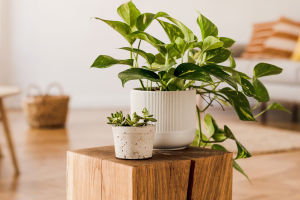Hey Lykkers, gather around — I’ve got a story for you. So there I was last spring, walking past an old stone wall in my neighbor’s garden when something caught my eye.
These tall, graceful flowers stood like little guardians by the wall, their purple petals swaying gently in the breeze. “Wall irises,” she told me when I asked. I'd seen irises before, but these had a quiet elegance — like they belonged in a fairytale.
That moment sent me down a rabbit hole of iris facts, and trust me, there’s more to them than just good looks. Let’s explore the world of wall irises — and I promise, you’ll look at them differently by the end of this read.
What Is a Wall Iris?
Let’s clear this up first — “wall iris” isn’t a scientific term, but rather a nickname for certain iris varieties like Iris germanica that love to grow near sunny walls or rocky spots. These plants thrive in well-drained soil and love basking in sunlight. They're perfect for lining stone borders or adding charm to a plain garden edge.
A Flower With Royal History
You might not expect a flower to have royal connections, but irises have been symbols of power and wisdom since ancient times. Imagine that: a flower once used to crown kings now quietly blooming in backyard gardens.
Built for the Tough Stuff
One thing I admire about wall irises is how tough they are. They don’t need pampering. These plants can handle drought, poor soil, and blazing sun. Thanks to their rhizomes — thick underground stems — they store water and nutrients, making them incredibly resilient. Great news for forgetful gardeners, right?
A Splash of Color in Every Shade
If you’re into color (who isn’t?), wall irises offer a whole spectrum. They bloom in everything from deep purples and soft whites to golden yellows and even near-black. Each bloom is like a little piece of art, especially with those ruffled edges and vibrant patterns.
More Than Just a Pretty Face
Historically, the root of the iris — called orris root — was used in perfumes, medicine, and even old-fashioned tooth powders. Today, it’s still used in some essential oil blends. So yes, your wall iris might have been part of someone’s perfume centuries ago.
Friends With Bees and Butterflies
Another reason to love them? They’re pollinator magnets. Bees, butterflies, and even hummingbirds are drawn to their open, inviting blooms. If you care about keeping your garden buzzing with life, irises are a solid pick.
They Multiply — Fast
Here’s a tip: if you plant one wall iris, expect more. They spread easily through their rhizomes. You’ll need to divide them every few years to keep them healthy, but the bonus? You can share the extras with your plant-loving friends.
What They Symbolize
Irises aren’t just about beauty. They represent hope, courage, and wisdom. Plant one, and it quietly sends a message: stand tall, stay strong, and bloom no matter where life puts you.
So next time you see a wall iris, stop and take a closer look. Behind those graceful petals is a story of strength, history, and quiet charm — just waiting to be appreciated.
Want a planting guide next? I’ve got you covered!


